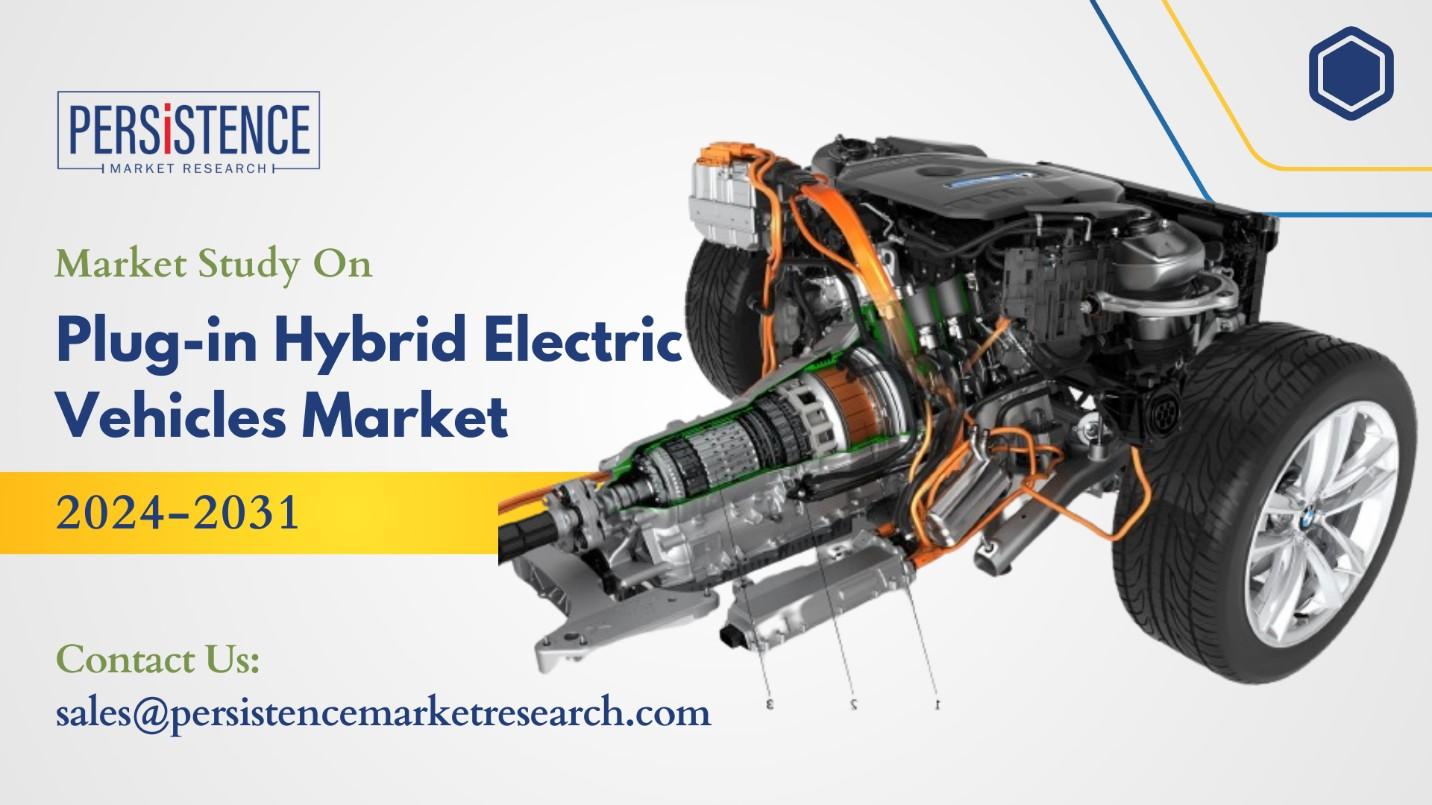Plug-in Hybrid Electric Vehicles Market: Impact of Technological Developments
The Plug-in Hybrid Electric Vehicles (PHEVs) market refers to the segment of the automotive industry focused on vehicles that combine a conventional internal combustion engine with an electric motor and battery, allowing for both plug-in electric charging and traditional fuel usage. This Plug-in Hybrid Electric Vehicles market is experiencing significant growth due to increasing environmental concerns, advancements in battery technology, and supportive government policies promoting clean energy transportation.
The Plug-in Hybrid Electric Vehicle (PHEV) market is at the forefront of the automotive industry's shift towards sustainable and environmentally friendly transportation. Technological advancements have been a significant catalyst in this transformation, driving the adoption and evolution of PHEVs. This article explores how technological developments are impacting the PHEV market, highlighting key areas such as battery technology, electric drivetrains, charging infrastructure, and software innovations.

Battery Technology Advancements
Enhanced Energy Density and Efficiency
One of the most critical factors influencing the PHEV market is the development of advanced battery technologies. Improvements in battery energy density have allowed PHEVs to achieve greater electric-only ranges, making them more appealing to consumers. Modern lithium-ion batteries, which are increasingly used in PHEVs, offer higher energy densities and longer lifespans compared to their predecessors.
Recent advancements include the development of solid-state batteries, which promise even higher energy densities, faster charging times, and improved safety. These batteries are lighter and more compact, addressing some of the key limitations of current lithium-ion technologies. As these
advancements are commercialized, they are expected to significantly enhance the performance and appeal of PHEVs.
Cost Reductions
Technological developments in battery manufacturing have also led to cost reductions. As production processes become more efficient and economies of scale are realized, the cost of batteries has been decreasing. This reduction in battery costs translates to lower overall vehicle prices, making PHEVs more accessible to a broader range of consumers. Lower prices also encourage higher adoption rates, driving further technological and market advancements.
Electric Drivetrain Innovations
Improved Powertrains
Technological progress in electric drivetrains is another crucial factor impacting the PHEV market. Modern electric drivetrains offer better performance, increased efficiency, and greater reliability. Advances in electric motor technology, including higher power outputs and better thermal management, enhance the driving experience and extend the vehicle’s electric-only range.
One significant development is the integration of dual-motor systems, which provide improved performance and efficiency. These systems can optimize power distribution between the front and rear wheels, enhancing traction and stability. Additionally, advancements in power electronics and control systems contribute to more efficient and responsive drivetrains.
Regenerative Braking Systems
Regenerative braking technology has become more sophisticated, allowing PHEVs to recover and store energy during braking. This technology not only improves the efficiency of the vehicle but also extends the range of the electric motor. Enhanced regenerative braking systems can now capture more energy and convert it more efficiently, contributing to better overall vehicle performance and reduced reliance on the internal combustion engine.
Request for Sample@ https://www.persistencemarketresearch.com/samples/18595
Charging Infrastructure and Technology
Faster Charging Solutions
The development of faster charging technologies is a key driver for the PHEV market. Advances in charging infrastructure, such as ultra-fast chargers and improved home charging solutions, are reducing the time required to recharge PHEV batteries. This convenience is a significant factor in increasing the appeal of PHEVs to consumers who might be concerned about long charging times.
For instance, new standards for high-power charging systems are being implemented, allowing for rapid charging capabilities that can replenish a significant portion of the battery in just a few minutes. These advancements help alleviate range anxiety and make PHEVs more practical for everyday use.
Wireless Charging
Wireless charging technology, although still in the early stages of adoption, holds promise for the future of PHEVs. This technology allows vehicles to charge without the need for physical
connections, enhancing convenience and reducing the wear and tear on charging ports. As wireless charging infrastructure becomes more widespread, it could further boost the attractiveness of PHEVs by simplifying the charging process.
Software and Connectivity Innovations
Enhanced Vehicle Management Systems
The integration of advanced software and connectivity features is transforming the PHEV market. Modern PHEVs are equipped with sophisticated vehicle management systems that optimize energy usage, monitor battery health, and provide real-time performance data. These systems enable drivers to make informed decisions about driving modes, charging habits, and energy efficiency.
Vehicle-to-Grid (V2G) Technology
Vehicle-to-Grid (V2G) technology is an emerging innovation that allows PHEVs to not only draw power from the grid but also return excess energy to it. This bidirectional energy flow can help stabilize the grid, support renewable energy integration, and provide additional revenue opportunities for PHEV owners. As V2G technology becomes more refined, it could play a significant role in enhancing the economic and environmental benefits of PHEVs.
Advanced Driver Assistance Systems (ADAS)
The incorporation of Advanced Driver Assistance Systems (ADAS) in PHEVs is improving safety and driving comfort. Features such as adaptive cruise control, lane-keeping assistance, and automatic emergency braking are becoming standard in many PHEVs. These systems leverage advanced sensors and software to enhance the driving experience and reduce the risk of accidents.
Technological advancements are profoundly impacting the Plug-in Hybrid Electric Vehicle (PHEV) market, driving improvements in battery technology, electric drivetrains, charging infrastructure, and vehicle connectivity. These developments are enhancing the performance, efficiency, and appeal of PHEVs, contributing to their growing adoption and integration into the automotive mainstream.
As technology continues to evolve, the PHEV market is expected to experience further growth and transformation. Innovations in battery technology, electric drivetrains, and charging solutions will play a pivotal role in shaping the future of PHEVs, making them an increasingly viable and attractive option for consumers seeking sustainable and efficient transportation solutions.
Follow Us: LinkedIn | Medium | Twitter
